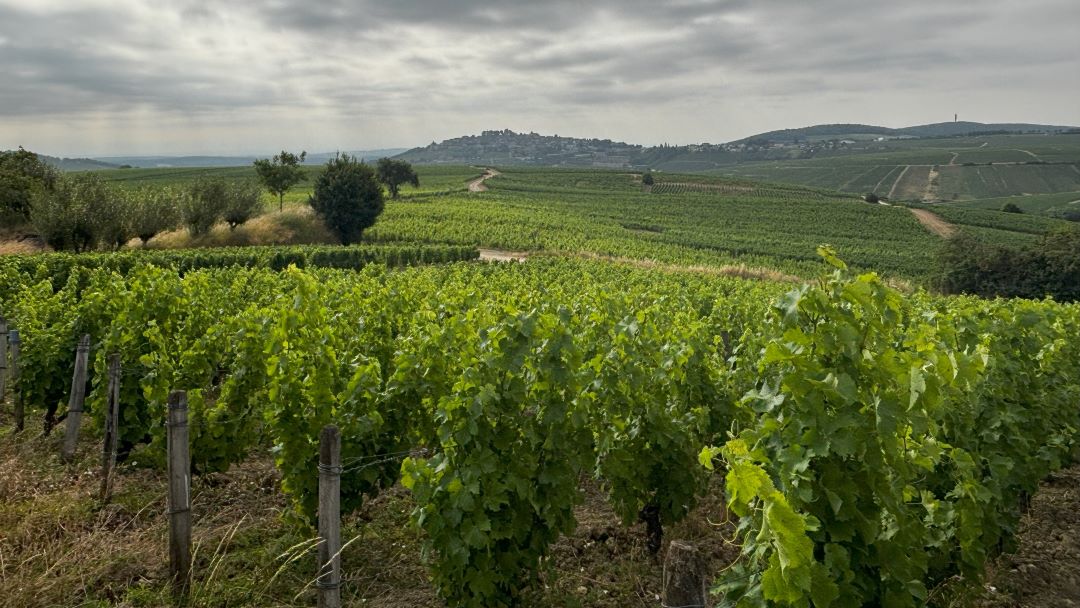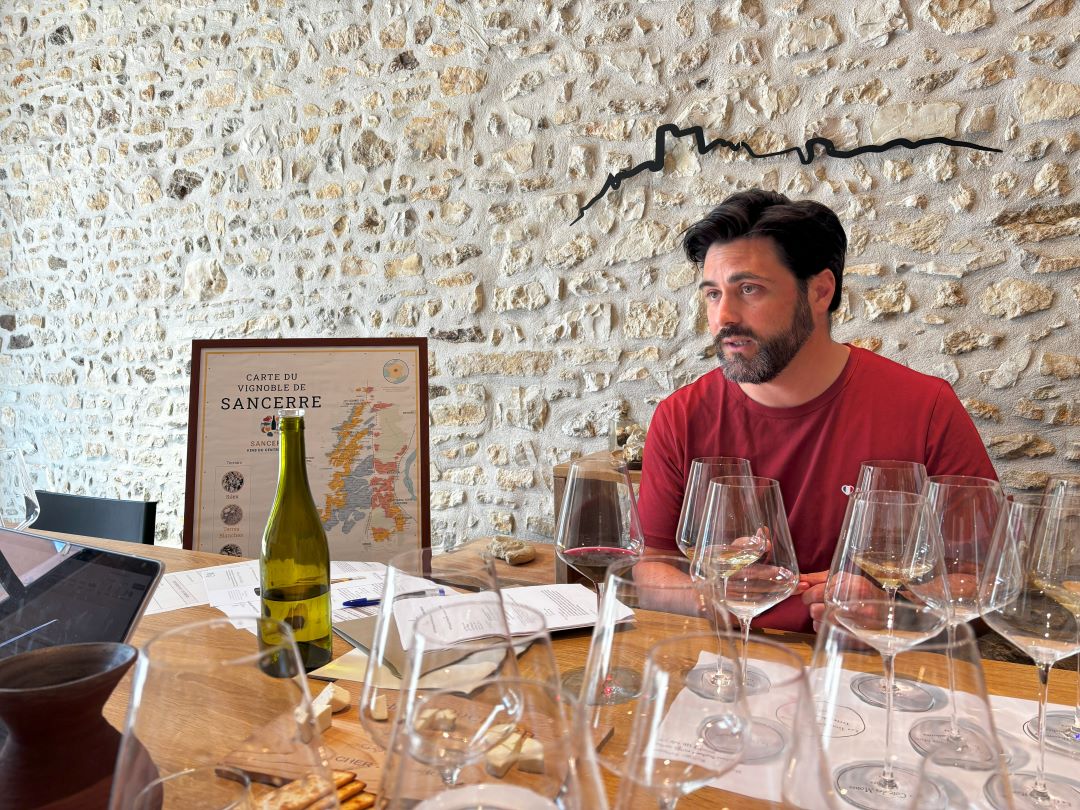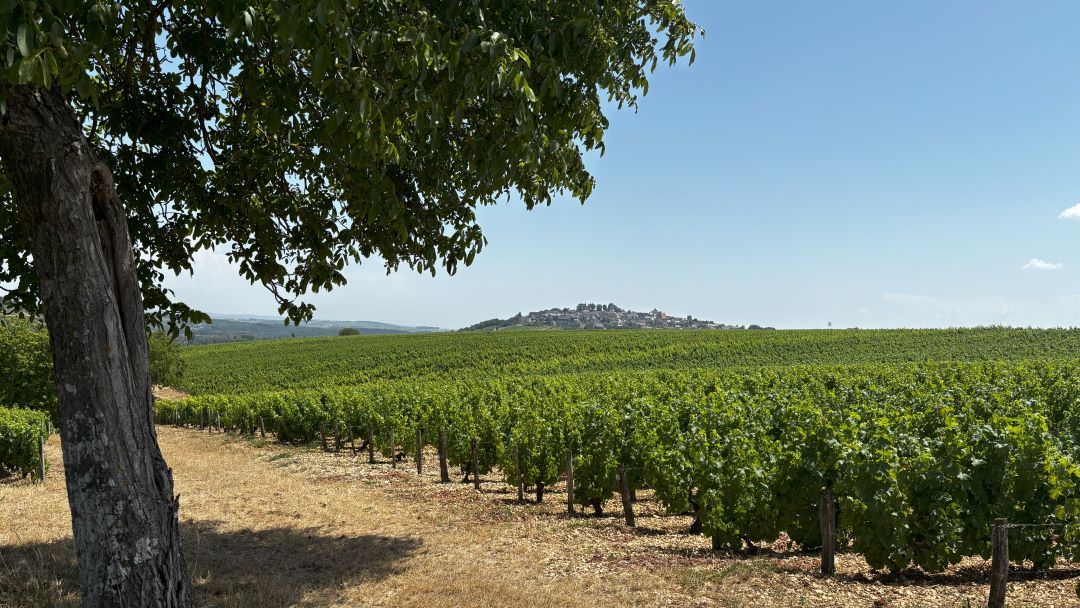Browse using the new Vinous website now. Launch →
Printed by, and for the sole use of . All rights reserved © 2015 Vinous Media
Sancerre 2024: A Test of Endurance
BY REBECCA GIBB MW | AUGUST 7, 2025
Every vintage seems to evoke a word or phrase that sums up its mood—not always cheerful, but always telling of how we adapt and endure. These words capture a zeitgeist, encapsulating what preoccupies us, what unsettles us, what defines us. In Sancerre, 2024 has found its own word of the year. Not one chosen by Oxford or Merriam-Webster, but by weary vignerons surveying rain-sodden, mildew-filled vineyards: catastrophic. It’s a word rarely whispered beyond the conclaves of cellars, but in this premium-priced Loire Valley appellation, it’s the word on every grower’s lips after a cold, wet growing season that battered grapes and morale alike.
Sadly, there’s no sugar-coating the 2024 vintage. You could use the sweetest, finest, glitter-speckled sugar, and you’d still struggle to disguise the fact that the season was a washout. If a winemaker mentions the number of barbecues they’ve had in the summer, that should set alarm bells ringing that it was a poor year. Indeed, in 2024, barbecues were fired up once or twice at best.
The 2024 vintage got off to one of the earliest starts ever, with temperatures in February and March 1.5˚C above average. This led to an early budburst, causing worries over potential frost, but the relatively warm spring meant there were few frost-fighting nights. June and July saw rainfall that totalled two-and-a-half times the ten-year average, but it did not come all at once. Every few days, just as things were beginning to look up, it would rain again. August provided a break in the wet weather, but mildew had long established itself and losses were devastating, particularly in organic vineyards.

Moody skies dominated the 2024 season in Sancerre.
In a chemical-filled battle against the elements, conventional producers saved their crops from destruction, but the resulting wines are difficult to recommend. Even though the fungicides provided protection to the relatively larger crops, spring and summer conditions led to underripe fruit. In 2024, producers were permitted to chaptalize as much as 2% versus the usual 1%, but the flavors in the wines are on the green end of the spectrum and the acidities are very high. These eyewatering acid levels are a function of high malic acid content in the grapes, which requires sunlight to degrade. In the absence of sunlight, all that malic acid remains. In some instances, slightly musty aromas are present in the wines, which can suggest a fungal issue. After all, machine harvesting does not discriminate what goes into the tank.
One Region, Two Worlds
The divide between quantity-oriented and quality-oriented producers is stark in 2024. In more clement vintages such as 2018, 2019 and 2020, warm, dry conditions allowed producers to ripen healthy grapes without too much difficulty. However, in challenging vintages, the more conscientious growers stand out. For those that managed to forge a decent wine out of the hellish 2024 season, yields are minuscule. Consequently, there will be very little wine that enters the market.

Luc Prieur of Domaine Paul Prieur is one of the young generation of vignerons making strides in quality and farming.
A large proportion of top-tier producers in Sancerre farm organically, and their inability to use systemic fungicides meant that their 2024 crops were more severely affected than those of conventional producers. Rampant mildew required an average of 19 copper sprays for organic producers versus 12 for conventional producers. Organic growers had to face the reality that they were using more petrol and compacting the soil to a greater extent than their conventional counterparts, negating a swathe of the environmental benefits that organic farming is supposed to offer. Organic viticulture is meant to be sustainable. But if you lose your entire crop because you farm organically and that threatens your business? That’s wholly unsustainable. A number of producers, including Domaine Tabordet and Michel Redde, abandoned their organic status in 2024, the latter just a year after achieving certification. Redde declassified their entire crop and will not release a single wine from the vintage. Winemaker Sebastien Redde explained, “We favor organic and biodynamic growing, but after 2024 we won’t look for certification. It’s not practical if you have extreme conditions. We don’t want to be constrained and lose the crop again.”
Single-vineyard wines from top producers in 2024 will be a rarity, with the tiny yields preventing many from filling even a single tank or foudre. It’s also clear that many bottlings from the 2024 vintage will contain a decent splash of wine from the generous 2023 vintage. Official rules allow for up to 15% of another vintage to be included in a blend, and in this case, the previous vintage was abundant. The 2023s are ripe, fruity and approachable, making them a natural choice to both enrich the 2024s and keep customers supplied until the 2025s make their way into bottle. There were also ways to enrich the 2024s in the winery. For example, Hubert Brochard undertook lees work to build palate weight and round out the wines’ angular contours in conjunction with the use of a variety of fermentation vessels. Others allowed a little malolactic fermentation to soften the palate.
Reds will be almost non-existent in 2024, with the fruit instead going to Rosé production.

Rodrigo Zamorano is making big changes at Hubert Brochard in Chavignol.
Looking Back On 2023
It’s a blessing that 2023 was so abundant, particularly for those who made little or no wine in 2024. Good water reserves in the soil, no worrying frosts and good flowering allowed for huge yields, which required quality-conscious producers to thin crops in order to concentrate and ripen the fruit, as discussed in last year’s article. While the season was warm, the large crops took longer to ripen. Just as the fruit was nearing maturity, rain swelled and diluted the berries. Many producers decided that the costs of green harvesting didn’t justify the means, instead choosing to make selections in the winery. These producers chose to use the free-run and first-press juice only, rejecting later-pressed juice, which is lower in acid and more vegetal in character. The wines certainly don’t have the power or concentration of the 2022s, but they are approachable in youth and easy to drink.

Blue skies and sunny days were in short supply during the 2024 season.
A Last Word
Catastrophic may never make Oxford’s word of the year, but it defined Sancerre’s 2024. The wines are unlikely to show the region in its best light. With prices still heading north, one must wonder: will Sancerre’s allure prove as weatherproof as its reputation?
I tasted the wines for this report in July 2024 in Sancerre and Pouilly-Fumé, both at visits to estates and in centralized tastings.
© 2025, Vinous. No portion of this article may be copied, shared or redistributed without prior consent from Vinous. Doing so is not only a violation of our copyright but also threatens the survival of independent wine criticism.
You Might Also Enjoy
Sancerre: Combat Fatigue, Rebecca Gibb MW, August 2024
Sancerre’s Charm Offensive, Rebecca Gibb MW, July 2023
Sancerre Sees Red, Rebecca Gibb MW, December 2022
Sancerre: Finding Its Place, Rebecca Gibb MW, August 2022
Show all the wines (sorted by score)
- Alphonse Mellot
- Anthony Girard
- Aurore Dezat & David Girard
- Cédrick Bardin
- Chateay La Robatine
- Clair de Brumes
- Claude Michot
- Claude Riffault
- Comte de la Chevalerie
- Daniel Reverdy
- Domaine Bouchié-Chatellier
- Domaine Chatelain
- Domaine Chollet
- Domaine Chotard
- Domaine Curot
- Domaine de Bel Air
- Domaine de Chézatte
- Domaine Delaporte
- Domaine Denizot
- Domaine des Mariniers
- Domaine Dominique et Janine Crochet
- Domaine du Bouchot
- Domaine Éric Louis
- Domaine Figeat
- Domaine Fouassier
- Domaine Francis Blanchet
- Domaine Franck Millet
- Domaine Gérard Boulay
- Domaine Godon-Reverdy
- Domaine Hubert Brochard
- Domaine Jonathan Didier Pabiot
- Domaine La Croix St-Laurent
- Domaine Masson-Blondelet
- Domaine Michel Redde et Fils
- Domaine Michel Vattan
- Domaine Pascal et Nicolas Reverdy
- Domaine Pierre Morin
- Domaine Pierre Riffault
- Domaine Raimbault-Pineau
- Domaine Roger Champault
- Domaine Séguin
- Domaine Serge Laloue
- Domaine Tabordet
- Domaine Tinel-Blondelet
- Domaine Vacheron
- Domaine Vincent Pinard
- François Crochet
- Henri Bourgeois
- Jean-Marie Reverdy
- Jean-Max Roger
- Jean Pabiot
- Jean-Pierre Bailly
- Joseph Mellot
- La Perrière
- Les Carrieres de Mézy
- Matthias et Emile Roblin
- Michel Girault
- Nicolas Girard
- Pauline Pabiot
- Paul Prieur et Fils
- Pinard Brothers
- Régis Jouan
- S & J.P. Agisson
- Vignobles Berthier
